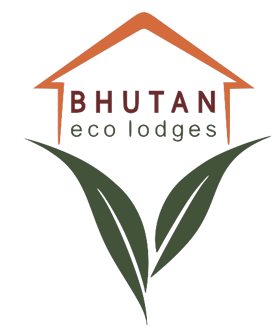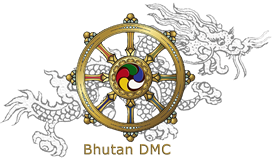Bhutan – Gangtey Trek
A magical trekking experience through the forest of juniper, magnolia & rhododendrons and breath-taking alpine meadows
Recommended Seasons: This trek is recommended for all months except July & August. The best months are April and early May when the rhododendrons are in full bloom.
Duration: 2 nights 3 days camping trek & 6 nights 7 days cultural tour with hotel stay
Trek Grade: Moderate
This trek is to the beautiful Phobjikha valley (3,000m), one of the few glacial valleys in Bhutan, which lies in the mountains east of Wangduephodrang. After crossing over the pass, one soon come to the great monastery of Gangtey, established in the 17th century. The village of Phobjikha lies just down from the monastery, on the valley floor. This quiet, remote valley is the chosen winter home of the rare black necked cranes, who migrate here annually from the Tibetan plateau. This moderate trek visits the villages of Gogona and Khotokha, passing through meadows and fields, then forests of juniper, magnolia and rhododendrons in full bloom in April. It is a short trek at relatively low elevations and visits several remote villages.
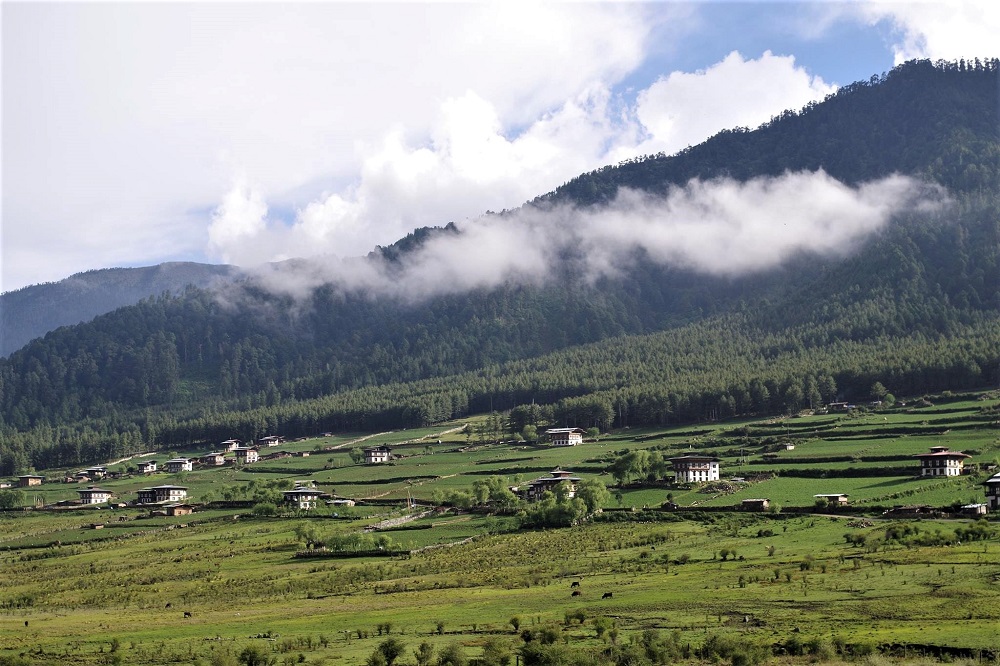
Itinerary for Gangtey Trek
Day 1: Arrive Paro (Bhutan) by Flight & transfer to Thimphu (55km, approx. 1.1/2-hour drive)
The flight to Paro is one of the most spectacular in entire Himalayas. Flying along the Himalayan range from Kathmandu or over Himalayan foothills if flying from Kolkatta, the journey offers fascinating views and an exciting descent into the Kingdom. Bhutan’s first gift to you as you disembark from the aircraft will be cool, clean fresh mountain air.
After immigration formalities and baggage collection you will be welcomed by our representative and embark on a picturesque drive to Thimphu, the capital town of Bhutan. The road leads through the Paro valley to the confluence of Paro and Thimphu rivers at Chuzom (confluence).
Shortly before reaching Chuzom, you will see on your left Tamchog Lhakhang, the temple built by Thangtong Gyalpo, a pioneering engineer who introduced the construction of suspension bridges into Bhutan and Tibet (several of which are still in use today). The present bridge to Tamchog Lhakhang was restored in 2005 in the design of a traditional style with iron chains and crossing this iron bridge is a wonderful experience.
On arrival, in Thimphu check-into the hotel. The capital town of Bhutan and the centre of government, religion and commerce, Thimphu is a unique city with unusual mixture of modern development alongside ancient traditions. It is perhaps still the world’s only capital city without a traffic light.
Later in afternoon walk around National Memorial Chorten, a large white structure crowned with a golden spire. It is located close to the center of Thimphu city and is one of its most iconic monuments. This is the most ideal spot to interact with locals who throng in large numbers to circumambulate the chorten, whirl the large red prayer wheels and pray at a small shrine inside the gate. The paintings and statues inside the monument provide a deep insight into Buddhist philosophy.
Afterwards an exploratory walk around Thimphu main street and market area.
Overnight at the hotel in Thimphu (Altitude 2,320m)
Day 2: Thimphu
Morning after breakfast, drive to see the iconic gigantic Buddha Dordenma (Vajra seated), the world’s largest sitting bronze statue. Majestically situated at Kuenselphodrang, it is an object of great veneration to all sentient beings. The land at Kuenselphodrang measuring 145 acres was gifted to Monks Body by His Majesty the Fourth King of Bhutan. The Park conserves 798.4 acres of forest area that surrounds the Buddha Dordenma statue. Dedicating it to the 60th birth anniversary celebration of His Majesty the Fourth Druk Gyalpo, His Holiness the Je Khenpo consecrated the 201 feet tall Buddha Dordenma statue at the Kuenselphodrang on 24th September 2015.
After this insightful visit drive to Textile Museum, established in 2001 under the royal patronage of Her Majesty Gyalyum Sangay Choden Wangchuck. The museum is managed by the Department of Culture, Ministry of Home & Cultural Affairs, Royal Government of Bhutan. Exhibitions here introduce the major weaving techniques, styles of local dress and textiles made by women and men.
Institute for Zorig Chusum, commonly known as Arts & Crafts School or Painting School is an important learning center that offers a six-year course on the 13 traditional arts and crafts of Bhutan. On a visit, one can see students learning the various skills taught at the school.
Located below the main town, Centenary Farmers Market popularly known as Weekend market is a pleasant, colourful & delightful place to mingle with locals. Farmers come from all over the country to sell their farm products in this market. Also available here are the handicrafts and artifacts, to purchase.
Then visit Changangkha Lhakhang, one of the ancient temples in Thimphu established on a site chosen by Phajo Drukgom Shigpo, the founder of Drukpa lineage in Bhutan. The central statue here is Chenrezig in a manifestation with 11 heads. From temple courtyard, there is fascinating view of Thimphu valley.
Conclude the sightseeing of the day with visit of Trashichhoedzong that has been the seat of the government since 1952 and presently houses the throne room and offices of His Majesty the King, the Secretariat and the Ministries of Home affairs and Finance. The dzong is located close to Thimphu town, next to the banks of the Wang Chhu River. It is an impressively large structure, surrounded by well-kept lawns and beautiful gardens.
Evening free to explore the government-run Handicrafts Emporium and local crafts Bazaar, to browse through example of Bhutan's fine traditional arts constituting hand-woven textiles, thangkha paintings, masks, ceramics, slate and wood carvings, jewellery, interesting items made from local materials.
Overnight at the hotel in Thimphu (Altitude 2,320m).
Day 3: Thimphu – Gangtey (150km, approx. 5-hour drive)
After breakfast drive up to Dochu-la pass (3,088m/ 10,130 ft) stopping briefly here to take in the view and admire the chorten, mani wall, and prayer flags which decorate the highest point on the road. If skies are clear, the following peaks can be seen from this pass (left to right): Masagang (7,158m), Tsendagang (6,960m), Terigang (7,060m), Jejegangphugang (7,158 m), Kangphugang (7,170 m), Zongphugang (7, 060 m), a table mountain that dominates the isolated region of Lunana - finally Gangkar puensum, the highest peak in Bhutan at 7,570m.
At Dochula Pass, 108 chortens or stupas known as Druk Wangyal Chortens have been built by Ashi Dorji Wangmo Wangchuk, the eldest Queen Mother. These chortens are built in three layers, the first lowest level layer has forty-five chortens, the second has thirty-six and the top layer has twenty-seven, built around the main chorten.
Then drive onto Gangtey. The valley of Gangtey is one of the most beautiful and unspoiled places in Bhutan. The surprise of finding such a wide, flat valley without any trees after the hard climb through dense forests is augmented by an impression of vast space and is an extremely rare experience in Bhutan where most of the valleys are tightly enclosed. A few kilometers beyond the Gangtey Monastery, on the valley floor lies the village of Phobjikha.
On arrival, check into the hotel.
Afternoon visit Gangtey Goempa (monastery), perched atop a small hill that rises from the valley floor. The Monastery is surrounded by a large village inhabited mainly by the families of the Gomchens who take care of the Monastery. In winter these families, together with the monastery’s monks, move away to another monastery, a day’s walk to the south. Gangtey, which is now managed by the government, is the only Nyingmapa monastery on the western side of the Black Mountain’s and is also the biggest Nyingmapa monastery in Bhutan. It is directed by Gangtey Tulku, the ninth reincarnation (Tulku) to bear that name.
Later explore beautiful Phobjikha valley, lying at an altitude of 2900 m. This is the winter home of rare, Black-necked Cranes, an endangers species that migrate from its northern habitats in
Tibet and Siberia, each winter.
Overnight at the hotel in Gangtey (Altitude 3,000m).
Day 4: Gangtey – Gogona, Distance: 14km, approx. 5 / 6-hour walk, Altitude: 3,100m
After breakfast commence the day’s trek. The trail leaves the valley at 2830m and leads south, then west through meadows and fields. It then climbs through a mixed forest of juniper, bamboo, rhododendrons and magnolia. The trek trail is rough and rocky and weaves through trees where pack animals have created deep muddy furrows. After crossing Tsele La (3,440m) the trail crosses several meadows, and then descends through forests to Gangak (3,020m). It is then a short climb to the camp at Gogona (3,100m), a beautiful hilltop site overlooking a long valley. Nearby is Gogona Lhakhang and dozens of poles with white prayer flags fluttering.
A 30-minute walk beyond Gogona is a hamlet where one may find homemade Ara (local alcoholic drink) to buy. The women here weave blankets and they also speak a different dialect called Bjop-kha (language of the nomads).
Overnight camp at Gogona (Altitude 3,100m).
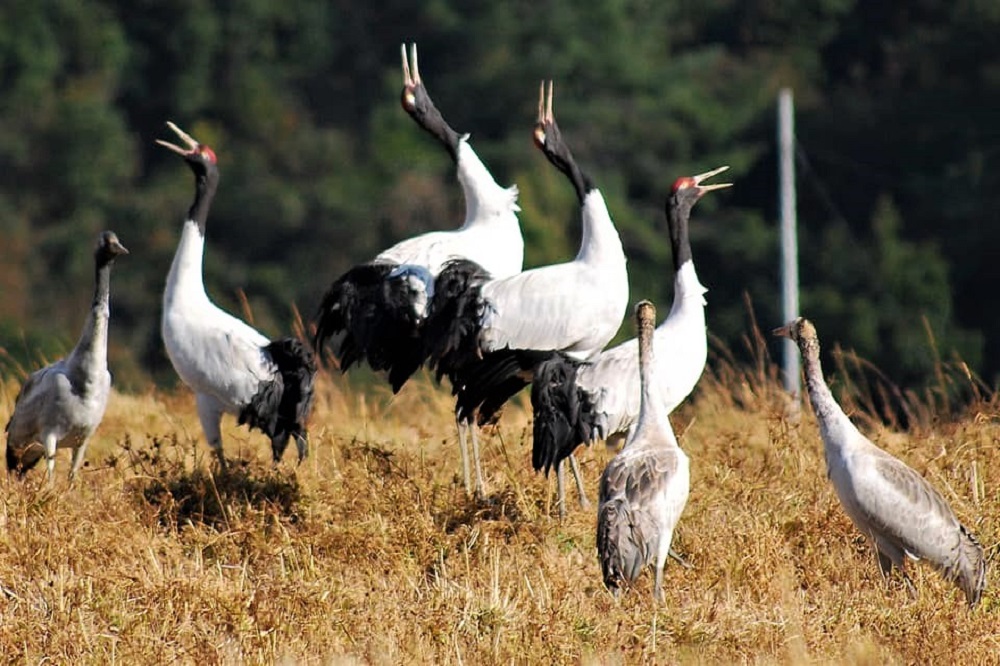
Day 5: Gogona – Khotokha, Distance: 15km, approx. 5 / 6-hour walk, Altitude 2,790m
The trail winds gently up above Gogona village, past flocks of sheep and ploughed fields. Climb into a forest of fir, oak, spruce, dwarf rhododendron, miniature azaleas, cypress and juniper. Much of the undergrowth is daphne, the plant that is used for hand-made paper and may be identified by its yellow flowers. Then a long but gradual climb leads to Shobju La pass (3,410m). The trail down from the pass is rocky and muddy, weaving through the forest and criss- crossing a small stream. Eventually, at about 3,000m, the trail meets a rough trek used by tractors to collect wood from the forest. Follow the road, with a few short cuts through the woods, to a sawmill and woodcutters camp at Dolonaga (2,830m). Still heading down, the trail overlooks the broad Khothangkha valley and eventually reaches a clearing, Chorten Karpo, where there are four Chortens dedicated to the four Je Khenpos who came from this area. Three of the Chortens are square, in Bhutanese style, and the fourth is Nepali style. The best camp is in this clearing at 2,790m, beside a forest of a large blue pines overlooking the valley and the village of Khothangkha, comprising about 60 rustic houses.
Overnight camp at Khotokha (Altitude 2,790m).
Day 6: Khotokha – Tikke Zampa, Distance: 12km, approx. 4-hour trek & transfer to Punakha
A short, steep climb along a well-known path takes one to Tashi La (2,800m). This is the upper terminus of the cable car that transports wood down to Chhuzomsa, 1,300m below. The walk down is through a beautiful forest, with the undergrowth changing from rhododendrons and magnolia to ferns and dwarf bamboo. This stretch of trail is one of the finest bird-watching areas in Bhutan. Among the species found here are laughing thrush, shrike, magpie and woodpecker. The trail then plunges down past steep terraced wheat fields to a cluster of houses at Whachay. The trail eventually meets the road near Tikke Zampa at 1,500m.
Afternoon visit Punakha Dzong. Also known as ‘The Palace of Great Bliss’, Punakha Dzong was built strategically at the junction of Pho Chhu and Mo Chhu rivers in 1637 by Zhabdrung Ngawang Namgyal to serve as the religious and administrative centre of the region. The Dzong has played an important role in Bhutan’s history and on 17 December 1907, the first King of Bhutan Gongsar Ugyen Wangchuk, was crowned here. Damaged by six catastrophic fires, an earthquake and once by flood, the Dzong has been fully restored by the fourth King. Dzongchung (or the little Dzong), built in 1328 by saint Ngagi Rinchen can still be seen opposite the main Dzong.
Overnight at the hotel in Punakha (Altitude 1,300m)
Day 7: Punakha – Paro (125km, approx. 4-hour drive)
Morning after breakfast, embark on a short walking excursion to Chimi Lhakhang:
The Chimi Lhakhang (temple), situated on a round hillock in the centre of Punakha valley near Lobesa, was built in 1499 by the 14th Drukpa hierarch, Ngawang Choegyel, after the site was blessed by the maverick saint Drukpa Kuenley who in the late 15th century used humour, songs and outrageous behaviour to dramatise his teachings and owing to this also known as ‘Divine Madman’. The Lhakhang is situated about 10 km from centre of Punakha town near Sopsokha village, from where a 20-minute walk through fields of mustards and rice, leads to a hillock that is the site of temple. Prayer flags are lined all along the road from the tiny village hamlet known as Yowakha, along a stream to the monastery. All houses in the village are decorated with paintings of phalluses on their exterior walls. The lama Kuenley had called the hillock where the monastery exists as the breast of a woman because of its round shape.
Then drive to Paro and enroute, visit Simtokha Dzong, one of the oldest fortresses of the country, built in 1629. Legend associated with dzong’s construction mention that the fortress was built to subdue a demon that was harassing travellers to this region. The most noteworthy artistic feature of this dzong is the series of over 300 finely worked slate carvings behind the prayer wheels in the courtyard.
On arrival in Paro, check into the hotel.
Afternoon visit Ta Dzong, originally built as Watchtower, which now houses National Museum. This seven-storied watch tower fortress or Ta Dzong was built in 1649 and during 1968 converted into National Museum of the country. The extensive collection includes antique thangkha paintings, textiles, weapons & armour, household objects and a rich assortment of natural and historic artifacts.
After the visit, walk down the trail to explore 17th century Rinpung Dzong, meaning (‘Fortress of the heap of jewels’), which has a long and fascinating history. The Dzong ranks as a high point of Bhutanese architecture. Its massive, buttressed walls that tower over the town are visible through the valley. Inside Rinpung Dzong are 14 shrines and chapels including Sandalwood Stupa, Protector’s shrine, Temple of the Guru’s eight manifestations, Chapel of the head lama, Chapel of the eleven-faced Avalokiteshvara, Temple of the Treasure Revealer, Temple of the Bursar.
Overnight at the hotel in Paro (Altitude 2,280m).
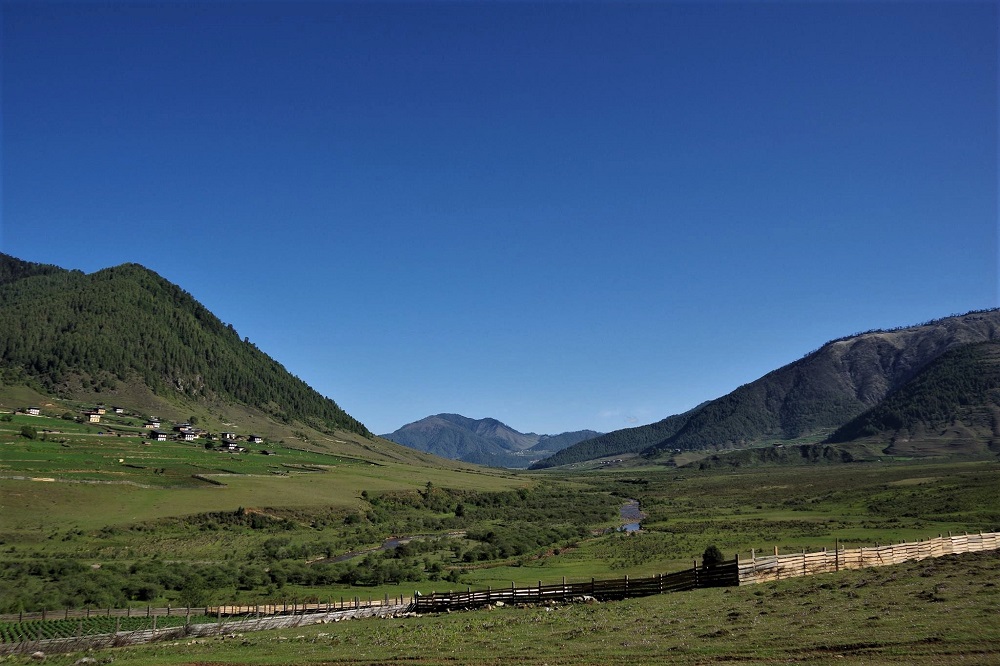
Day 8: Paro
After breakfast, the morning is reserved to visit Taktsang Monastery (approx. 5-hour round trip walk), one of the fabulous locations in the known world. The Taktsang Monastery is the most famous of Bhutan’s monasteries, perched on the side of a cliff 900m above the Paro valley floor. It is said that Guru Rinpoche arrived here on the back of a tigress and meditated at this monastery and hence it is called ‘Tiger’s Nest’. This site has been recognized as a most sacred place and visited by Zhabdrung Ngawang Namgyal in 1646 and now visited by all Bhutanese at least once in their lifetime. On 19 April 1998, a massive fire had severely damaged the main structure of building but later this Bhutanese jewel got restored to its original splendour.
Afternoon drive to the base of Drukgyel Dzong, a ruined fortress where Bhutanese warriors fought Tibetan invaders centuries ago. The snowy dome of sacred Chomolhari, ‘mountain of goddess' can be seen in all her glory from the approach road to the Dzong. Nearby visit a traditional farmhouse, which offers deep insight into lifestyle of village folks.
While returning to the hotel, en route visit the 7th century Kyichu Lhakhang, one of the 108 temples built in the Himalayas by Tibetan King, Songtsen Gampo. The building of this temple marks the introduction of Buddhism in Bhutan.
Overnight at the hotel in Paro. (Altitude 2,280m)
Day 9: Depart Paro
After breakfast, transfer to the airport for flight to onward destination. Our representative will help you with exit formalities and bid you farewell.
HOTELS IN THIMPHU
HOTELS IN PUNAKHA & WANGDUE
HOTELS IN GANGTEY
HOTELS IN TRONGSA
HOTELS IN BUMTHANG
HOTELS IN MONGAR
HOTELS IN TRASHIGANG
HOTELS IN SAMDRUP JONGKHAR
HOTELS IN PHUENTSHOLING
HOTELS IN HAA
HOTELS IN GELEPHU
HOTELS IN ZHEMGANG
RESTAURANTS IN PARO
RESTAURANTS IN THIMPHU
RESTAURANTS IN PUNAKHA
TOUR ITINERARIES
TREKKING ITINERARIES
SPECIAL INTERESTS TOURS
UNIQUE FESTIVALS & FAIRS
BLOG
.JPG)

